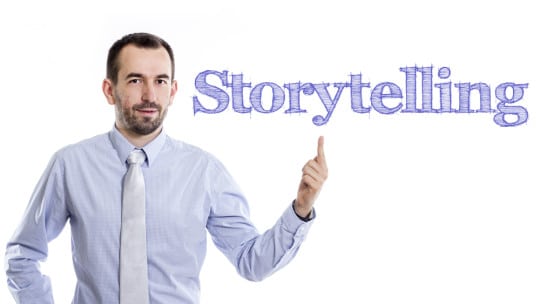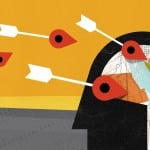
Stories are the oldest form of advocacy. Storytellers have passed the baton of history through generations, giving rise to ideas and inventions that have shaped the world. It should come as no surprise, then, that our current place in history has quickly been defined through the lens of digital storytelling (for better or for worse).
As research suggests, narratives are greater tools of persuasion than traditional advertisements or advocacy language. The difference between success and failure, of course, is how well your story resonates.
It's the Idea, Not the Technology
 But we tend to think about resonant stories as those that meet individuals on digital platforms. The minimum entry requirement in our market now demands some sort of digital-first approach. This can lead us to quickly jump into assessments of which digital medium will be best to convey our data. Will it be a one-pager? A microsite? An infographic? A video? But throughout this process, it’s possible, if not likely, that we fail to spend enough time focusing on a larger opportunity: identifying the best story to tell with our information.
But we tend to think about resonant stories as those that meet individuals on digital platforms. The minimum entry requirement in our market now demands some sort of digital-first approach. This can lead us to quickly jump into assessments of which digital medium will be best to convey our data. Will it be a one-pager? A microsite? An infographic? A video? But throughout this process, it’s possible, if not likely, that we fail to spend enough time focusing on a larger opportunity: identifying the best story to tell with our information.
Digital is only part of the equation: Good storytelling starts with an authentic, core narrative. From there, though, it’s about supercharging that story with great design and development to scale this authenticity to a wider audience.
The foundation of any good digital story is a good idea. While this may seem obvious, there has never been a more important time to remember that digital tools are vehicles for communicating ideas, not the ideas themselves. Resist the temptation to build a story around your tools.
From the Globe to Your Doorstep
The founder of Google Earth, Brian McClendon, had a theory about why people used Earth. His theory influences how I think about digital products and good digital stories.
“I’ve seen it thousands of times,” he would say. “Every time someone opens Earth, they go straight to their home. It grounds them. It validates the tool through a personal connection with time and space—empowering the user to go explore and learn about the rest of the world.”
Brian’s basic point: Even though Earth primarily was an exploration of the unknown, the user's first inclination—what she was most comfortable doing—was to explore the world from the vantage of something she understood.
The takeaway: Successful digital storytelling revolves around the user. It does not compel action through direct appeals or heavy-handed arguments. It enters an individual’s digital universe not by force, but through familiarity.
All Storytelling Is Local
If this feels abstract, let me clarify with an example. After Hurricane Harvey, the NY Times put together a digital story that aimed to contextualize for the rest of the country the historic amount of rainfall Houston received (50 inches).
Once you input your ZIP Code, you can see how long it would take your community to accumulate the amount of rainfall Houston received in a week. In my hometown of Hastings, Neb., it would take 16 months.
The point is that you should always operate upon a localized foundation—or, at the very least, consider how you might best localize your story.
Again, back to the Earth example: The product was successful because it localized the experience digitally and emotionally. It enabled the exploration of new knowledge because of how well it familiarized the user with the product.
Bringing It Home
Our industry designs strategies that ask individuals to step outside their routines and consider new information. Many argue that these personal routines are increasingly distancing us from one another, making it harder for new information to pierce the bubbles of personal reality.
But I see this as an opportunity: Individuals are equipped with more information than ever, which means arguably it is the best time to inject theories and ideas into the public discourse. But we need to do more than simply educate and persuade—we need to familiarize.
The age of information demands authenticity and familiarity. So before you think about tactics, focus on your narrative. Ground your approach in a story that demonstrates a connection between the issue and the user experience.
Matt Lockwood is CEO of LGND.
